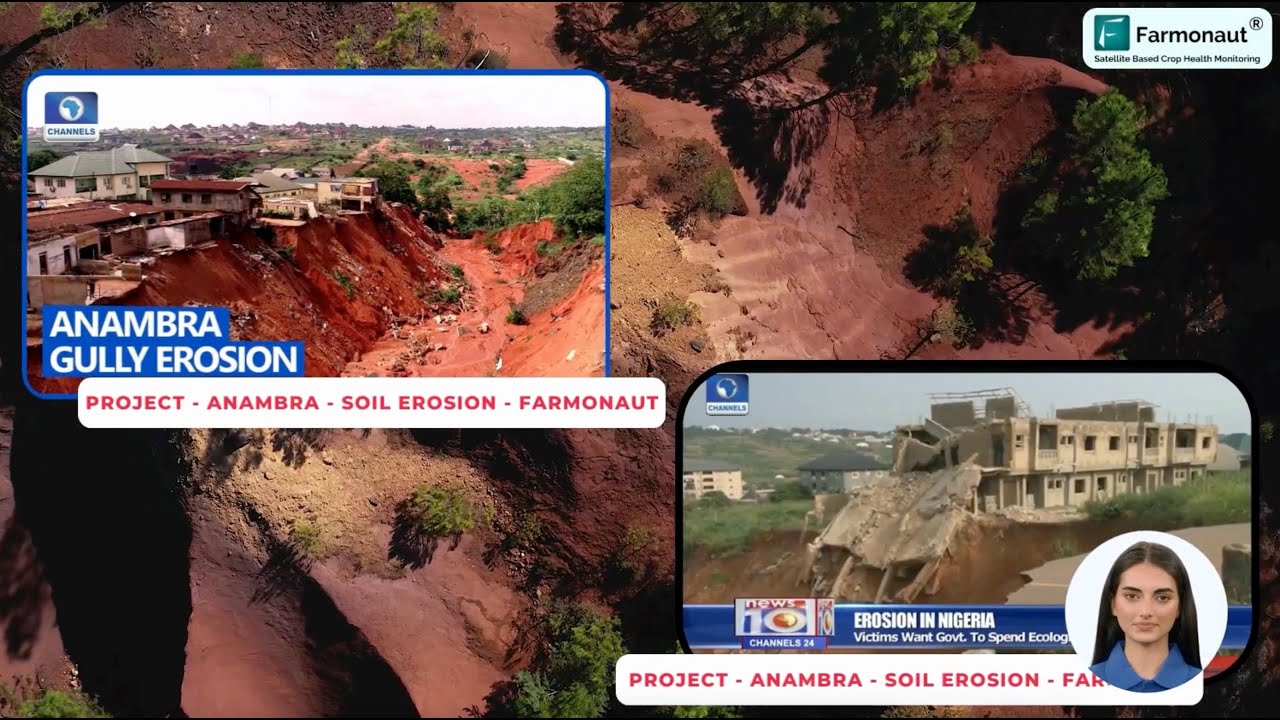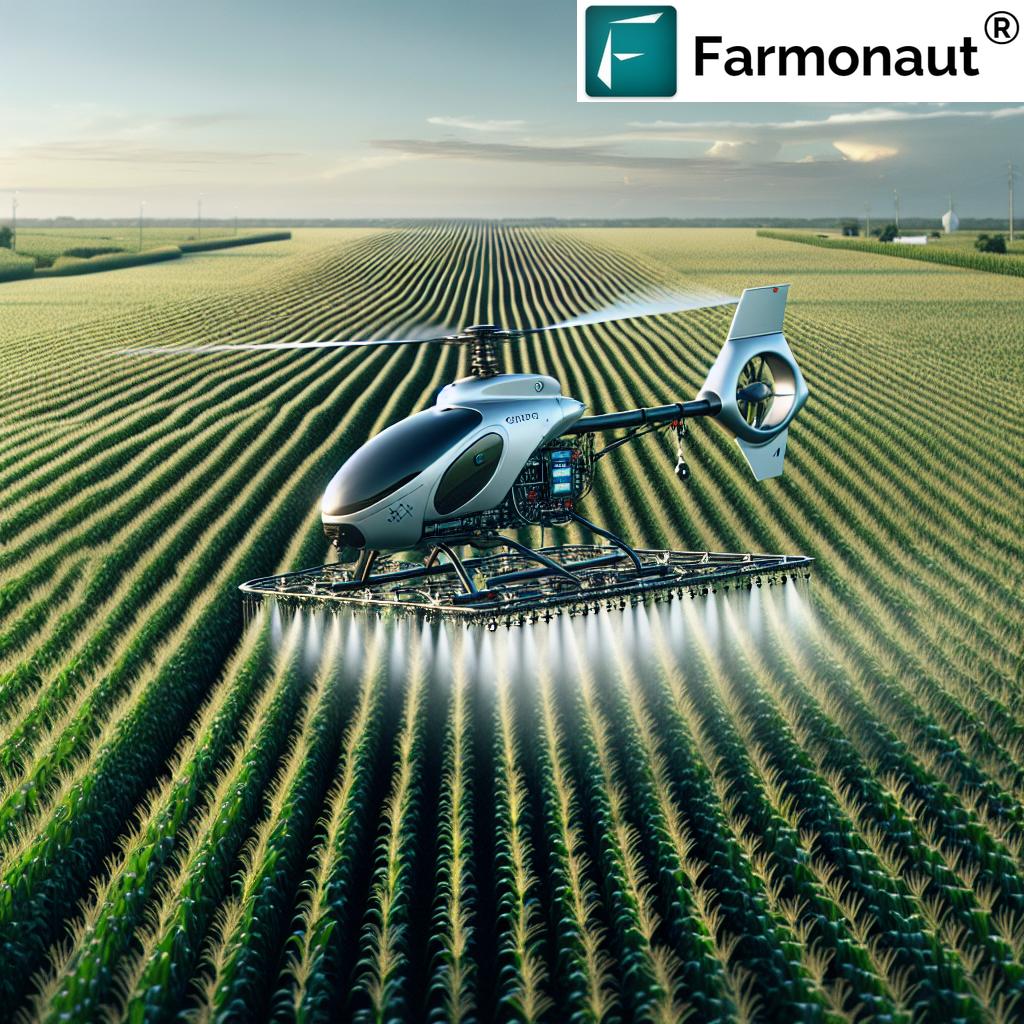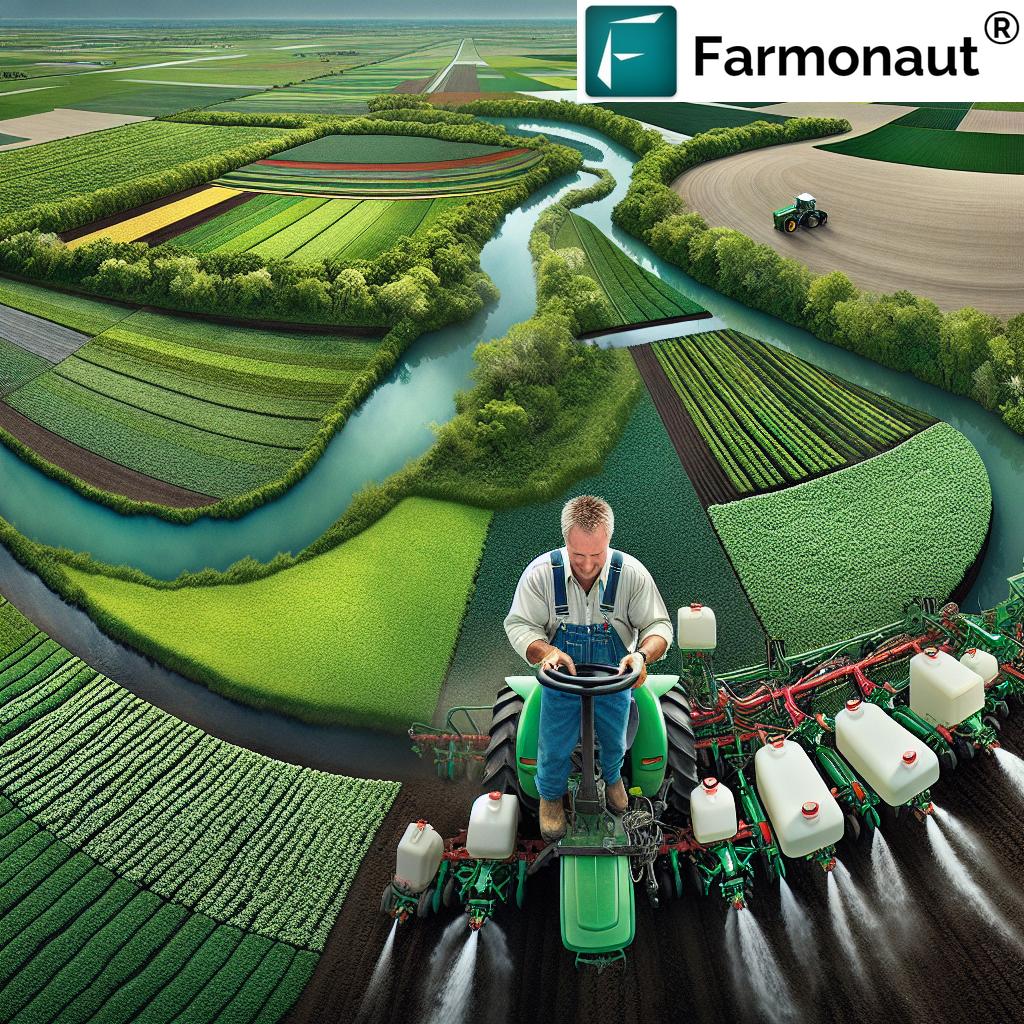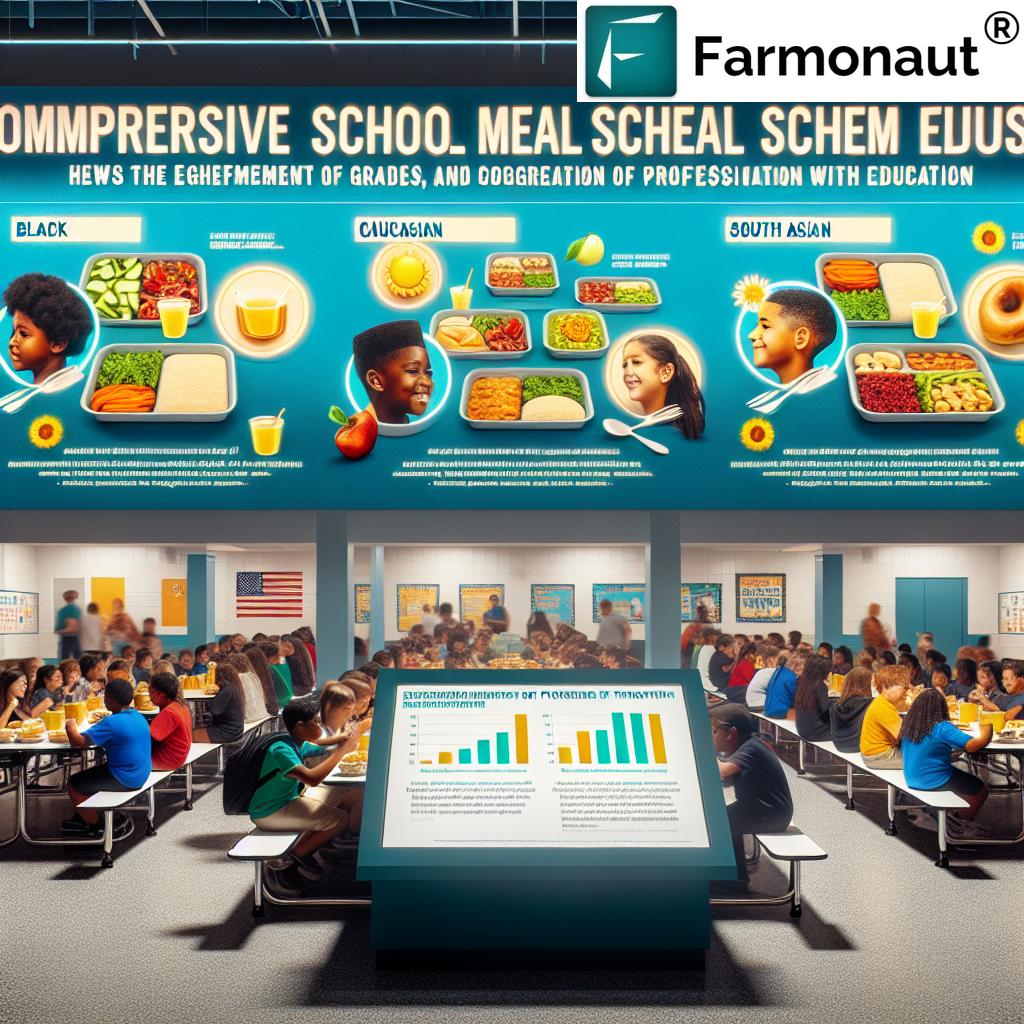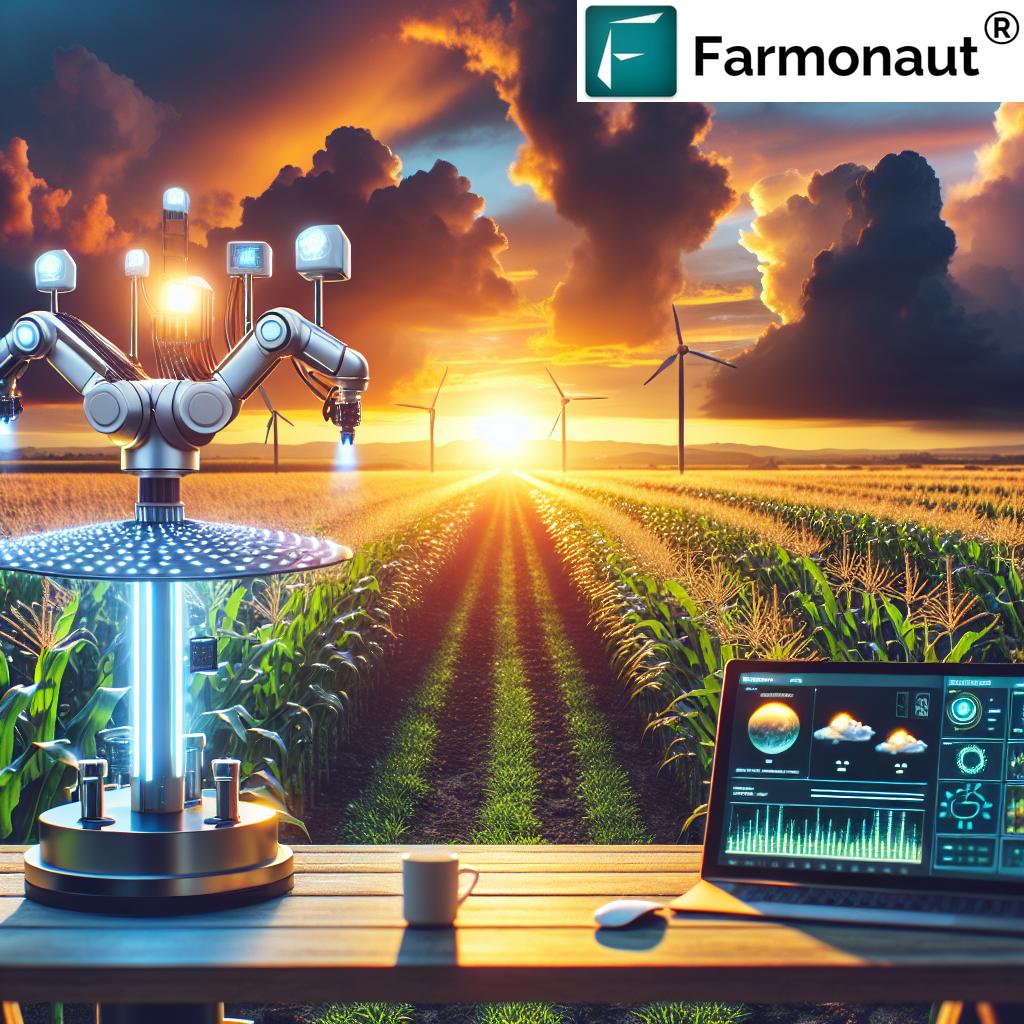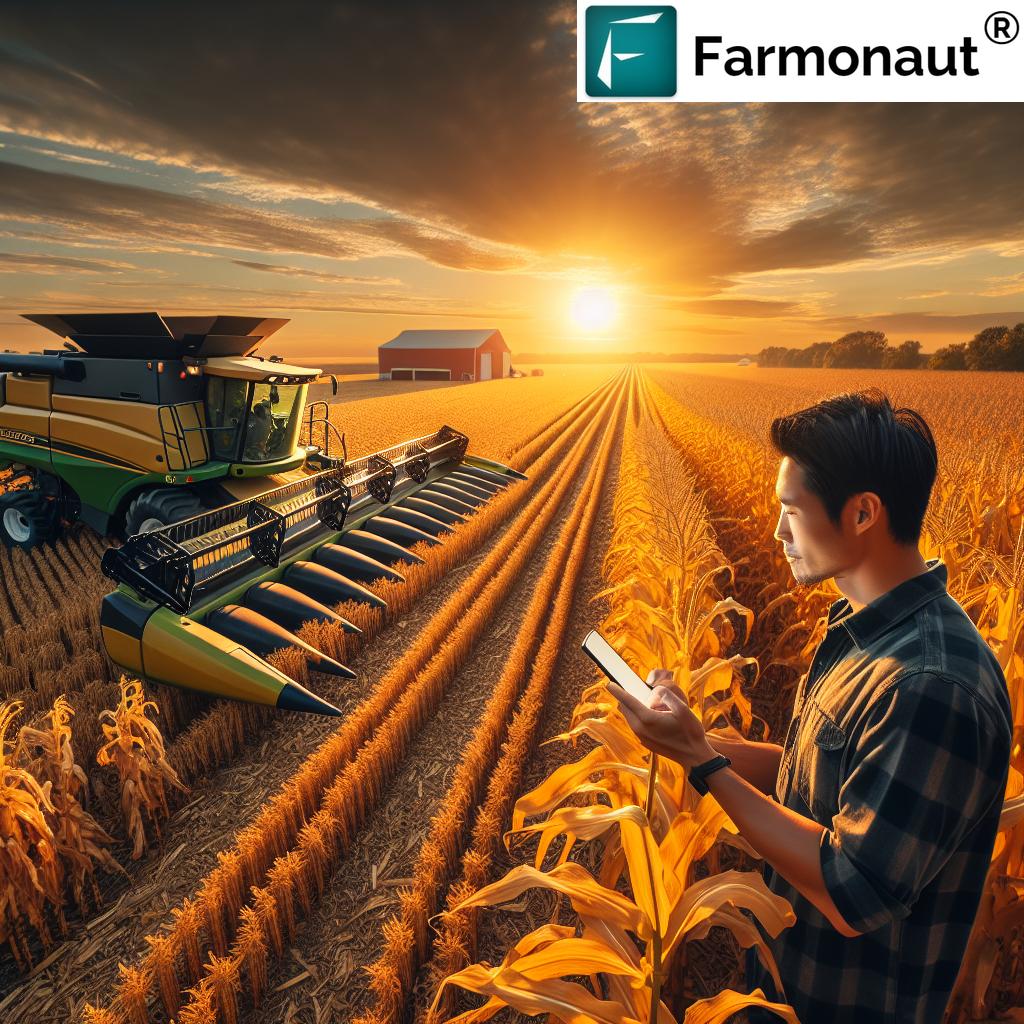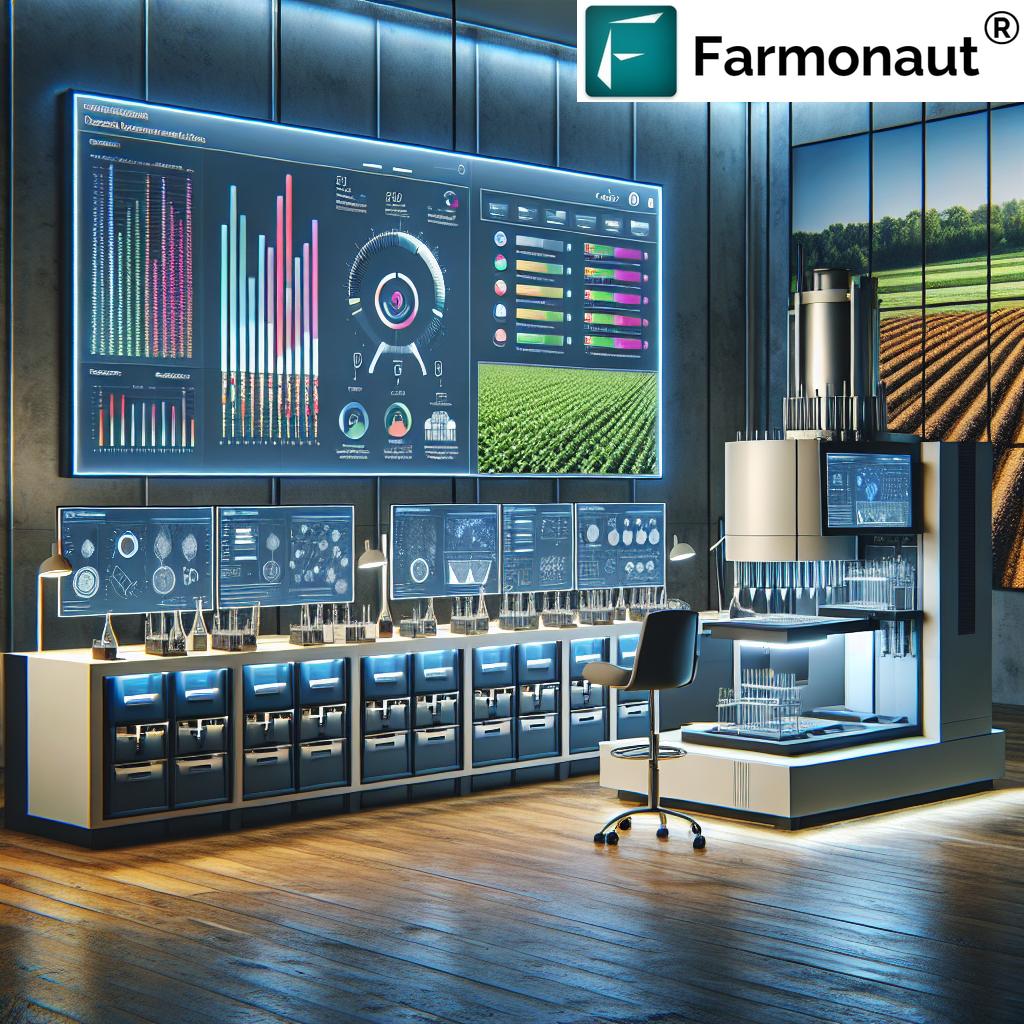Agriculture Gateway Market: 7 Shocking North America Trends
“Precision agriculture adoption in North America surged by 35% between 2018 and 2023, revolutionizing crop management practices.”
- Market Overview: Agricultural IoT Solutions in North America
- Key Components of the Agriculture Gateway Market
- Connectivity & Deployment Models for Farm Management
- Technological Innovations Driving Smart Farming
- Key Applications: Precision Agriculture & Beyond
- Trends Impact Comparison Table
- 7 Shocking North America Agriculture Gateway Market Trends
- Farmonaut’s Role: Satellite-Powered Agricultural Intelligence
- Challenges & Emerging Opportunities
- Frequently Asked Questions (FAQ)
- Conclusion
Welcome to our comprehensive analysis of the Agriculture Gateway Market in North America. As the agricultural industry experiences a seismic shift towards precision agriculture and smart farming technologies, we—as passionate innovators and facilitators in agritech—believe it is crucial to unpack the transformative trends redefining modern farm management, crop monitoring, and overall agricultural sustainability. In this extensive blog, we harness the most up-to-date research and industry statistics to shine a spotlight on seven truly shocking trends that are shaping the future of agriculture gateway systems across the continent.
By leveraging advanced IoT (Internet of Things) solutions, cutting-edge AI-driven analytics, and multi-layered farm management software platforms, farmers, agribusinesses, and policymakers are now empowered to optimize resources, elevate crop yields, and drive environmentally conscious operations. Let us journey together through these emerging paradigms—backed by insights, visuals, and actionable takeaways for every stakeholder in the agriculture value chain.
Market Overview: Agricultural IoT Solutions in North America
In 2023, the agriculture gateway market reached a value of approximately USD 2.4 billion in North America and is forecasted to grow at a robust CAGR of over 10.4% through 2032 (Source). Driving this momentum are:
- The widespread adoption of precision farming: Farms of all scales are rapidly integrating real-time monitoring, AI-powered management software, and data-driven resource optimization.
- Government support: Policies and subsidies promoting digitalization and sustainability are accelerating technology uptake in both the US and Canada.
- Private & public investment: Capital inflow is fueling expansion, innovation, and partnerships, especially in wireless device deployment and cloud-based analytics platforms.
What makes this market unique?
- The seamless integration of hardware (sensors, IoT devices), software (management & analytics platforms), and services (deployment and support)—enabling holistic transformation for farmers.
- Unprecedented access to data insights across the value chain, from field-level soil monitoring to nationwide crop forecasting.
- A strong footprint in North America, which accounted for nearly 31% of the global agriculture gateway sector in 2023—outpacing other regions in both adoption rates and capital expenditure.
Defining the Agriculture Gateway Market
The agriculture gateway market encompasses a set of solutions—hardware, software, and services—that bridge the gap between farmers, IoT devices, data analytics platforms, and decision-makers. These gateways act as intelligent nodes, collecting, processing, transmitting, and safeguarding critical agricultural data for enhanced management, operational efficiency, and sustainability.
“Smart farming technologies have increased average crop yields by up to 20% across major North American agricultural markets since 2020.”
Key Components of the Agriculture Gateway Market
Let’s break down the core building blocks enabling this revolution in farming technology, underpinning everything from precision irrigation to environmental intelligence:
1. Hardware: The Sense-and-Respond Backbone
- Soil and weather sensors: Devices that continuously monitor soil moisture, temperature, salinity, rainfall, and atmospheric conditions—crucial for real-time crop status insights.
- Actuators & control devices: Automated valves, irrigation controllers, and nutrient dispensers that adjust input delivery based on actionable data.
- Wireless IoT nodes: Solutions using Wi-Fi, LoRaWAN, Zigbee, or NBIoT for remote field deployment, enabling scalability from smallholdings to mega-farms.
2. Software: The Digital Brain
- Farm management software platforms: Integrated dashboards deliver visualizations, alerts, and planning tools for irrigation, fertilization, and crop health, facilitating remote operations.
- Data analytics engines: Big data processing and artificial intelligence algorithms extract trends and prediction models for optimal crop management, pest control, and yield estimation.
- Cloud-based decision support: Enabling seamless data sharing among farmers, agronomists, and supply chain partners—unlocking collaborative intelligence and efficiency.
3. Services: The Support Network
- Managed services: Technical support, IoT device deployment, network troubleshooting, and ongoing monitoring to maximize technology value.
- Professional consulting: Customization of solutions for crop-specific needs, guidance on data interpretation, and regulatory compliance assistance.
Connectivity & Deployment Models for Farm Management
Robust and flexible connectivity solutions are the lifeblood of next-generation farming operations:
- Wired (Ethernet/Fiber): Primarily for high-bandwidth centers (e.g. farm offices or packing units), offering rock-solid links for large-scale data analysis.
-
Wireless (Wi-Fi, LoRaWAN, Zigbee): Especially powerful for distributed IoT farms; these networks:
- Reduce installation complexity and costs across vast acreage.
- Enable real-time remote monitoring of soil moisture, microclimates, and crop conditions.
- Support scaling from a single field to continent-spanning agribusinesses.
Cloud vs. On-Premises Deployment:
-
Cloud-based Agriculture Data Analytics: Expected to surpass USD 4.7 billion by 2032, cloud deployments offer:
- Scalability & accessibility: Seamless access to data from any device, enabled by powerful remote servers.
- Real-time insights: Integration of satellite imagery, weather data, and IoT sensor feedback for instantly actionable analytics.
- Reduced total cost: Lower infrastructure burden for North American farmers and agribusinesses, fostering widespread smart farming adoption.
- Environmental impact: Optimized resource management translates to lower water/fertilizer use, supporting sustainability.
- On-premises gateways: Ideal for sites with sensitive data, connectivity concerns, or compliance requirements; often combines with off-grid sensors and local analytics.
Looking to integrate satellite and IoT data directly into your software for custom applications? Check out our
Farmonaut Satellite & Weather API (Developer Docs). Empower your platforms with real-time crop, weather, and soil intelligence without reinventing the wheel!
Technological Innovations Driving Smart Farming
The last five years have been a hotbed for innovation in the agriculture gateway market. Let’s survey the most cutting-edge advancements:
-
Artificial Intelligence (AI) & Machine Learning:
- From yield prediction algorithms to real-time pest/disease alerts, AI unlocks predictive agriculture. Such intelligence analyzes disparate data—soil, weather, crop images, and historical yields—to optimize farm management at every level.
- Tools like Farmonaut’s Jeevn AI advisory system provide actionable, crop-specific insights powered by satellite and IoT data, transforming decision-making for farmers globally.
-
Big Data Analytics & GIS:
- Integration of extensive, multi-source datasets (satellite images, sensor feeds, biochemical profiles) enables both micro (farm-level) and macro (regional/national) optimization of crop and water management.
-
Blockchain for Traceability:
-
Secure, transparent record-keeping for every phase of the agricultural supply chain—improving food safety, reducing fraud, and building consumer trust.
Explore Farmonaut Traceability Solutions: Using blockchain to authenticate provenance and ensure the integrity of produce, especially for large-scale food, textile, and export companies.
-
Secure, transparent record-keeping for every phase of the agricultural supply chain—improving food safety, reducing fraud, and building consumer trust.
-
Smart Devices & Automation:
- Deployment of automatic irrigation systems, fertilization schedulers, and disease/pest detection cameras is revolutionizing labor efficiency, especially in water-scarce or labor-constrained rural areas.
-
Satellite Connectivity for Rural America:
- With the rollout of satellite internet services across North American farmlands, even the most remote regions can benefit from real-time, cloud-based farm data analytics and monitoring applications for the first time.
Key Applications: Precision Agriculture & Beyond
How are these technologies deployed in the field—and what practical benefits do they unlock for North American agriculture?
Precision Farming
- Variable-rate seeding, fertilization, and irrigation: Powered by GIS data, soil and weather sensors, farmers can tailor input delivery to specific field zones, reducing waste and maximizing yields.
- Satellite-driven crop health monitoring: Multispectral imagery, as utilized in Farmonaut’s Satellite Crop Monitoring Platform, delivers NDVI analysis, water stress detection, and early disease alerts remotely—empowering smarter in-season interventions.
Livestock Monitoring
- Sensor-embedded wearables for cattle or poultry help farm managers track health, detect abnormalities, and prevent disease outbreaks.
Smart Irrigation Systems
- Automated valves and pump controllers—connected to weather forecasts and soil moisture sensors—enable water conservation and improved crop resilience, even amid droughts.
- Want to drive water savings and boost yields? Explore Farmonaut Large Scale Farm Management—your all-in-one solution for efficient irrigation scheduling, resource planning, and stakeholder collaboration on expansive farm operations.
Comprehensive Farm Management Software
- Unified platforms aggregate data from all sources (sensors, satellites, machinery logs), streamlining compliance, farm records, inventory, and supply chain traceability. This simplifies audit processes and enhances transparency for both regulators and end consumers.
Sustainability, Carbon Footprint & Environmental Metrics
-
New tools are emerging to track farms’ carbon emissions and natural resource impact. These solutions help producers meet regulatory requirements and appeal to eco-conscious consumers.
Curious about farm sustainability? Farmonaut Carbon Footprinting offers a user-friendly dashboard to monitor, optimize, and report your operation’s carbon intensity.
Trends Impact Comparison Table: Agriculture Gateway Innovations in North America
| Trend Name | Estimated Adoption Rate (2024, %) | Key Technologies Involved | Main Benefits | Estimated Yield Increase (%) | Sustainability Improvement Indicator |
|---|---|---|---|---|---|
| Precision Irrigation Systems | 42% | Soil moisture sensors, wireless irrigation controls, AI analytics | Water conservation, increased drought resistance, reduced costs | +12-20% | Up to 40% water savings, GHG reduction |
| IoT Crop Monitoring & Sensors | 56% | Wireless IoT devices, multispectral crop health sensors, cloud data management | Early disease/pest detection, real-time health insights, resource optimization | +13% | Lower pesticide/fertilizer use |
| Farm Management Software Platforms | 48% | Integration software, cloud analytics, mobile apps | Centralized control, remote farm access, compliance/easy reporting | +8% | Improved traceability, less paper usage |
| Autonomous Farming Machinery | 25% | Self-driving tractors, connected sprayers, robotics | Labor savings, precise input application, operational safety | +7% | Reduced emissions, fuel savings |
| Blockchain-Enabled Traceability | 21% | Blockchain ledgers, smart contracts, secure APIs | Supply chain transparency, fraud reduction, market access | +4% | Reduced risk of contamination, waste reduction |
| Fleet & Resource Management Solutions | 36% | Telematics, AI routing, real-time tracking, satellite integration | Cost efficiency, asset safety, optimized logistics | +6% | Lower fuel usage, less idling |
| Satellite-Based Crop Health Analytics | 29% | Satellite NDVI imaging, AI-enabled analytics, API integrations | Wide-area monitoring, accurate yield estimation, disaster assessment | +9-14% | Broad-field efficiency, crisis mitigation |
Note: These figures are based on a synthesis of latest industry researches and market data. They demonstrate the remarkable, quantifiable impact of technology-led agriculture transformation in North America, supporting the case for continued digitalization of farm management by farmers and agribusinesses alike.
7 Shocking North America Agriculture Gateway Market Trends
Let’s explore the seven trends in detail, unpacking their impact, underlying technologies, and actionable opportunities for every agricultural stakeholder:
1. Explosion of Wireless IoT Crop Monitoring Systems
- Modern farms now resemble live data networks—thousands of wireless sensors record everything from soil health to microclimate shifts.
- Farm management software interprets this deluge into daily action plans, allowing North American farmers to spot stressors and avert risks before they escalate into lower yields or crop failures.
- Adoption is especially aggressive across US corn, soy, and wheat belts, where a single missed irrigation or pest invasion can result in multi-million-dollar losses.
- Farmonaut’s satellite-based technology expands this approach, delivering complete NDVI, moisture, and disease maps remotely for every plot within a farm.
2. Smart Irrigation and Water Management’s Quantum Leap
- Soil and weather sensors coupled with AI-driven analytics platforms enable “just-in-time” irrigation—delivering water only where and when needed.
- This has led to up to 40% savings in water, directly supporting the shift toward more sustainable agriculture technology in drought-prone states like California and Texas.
- Remote management means US and Canadian growers can now operate and monitor irrigation pumps from their mobile devices.
3. Artificial Intelligence: The New Farm Manager
- AI is transforming crop management by analyzing big data from multiple sources (satellites, IoT sensors, historical yield records).
- Examples include early warnings on pest/disease outbreaks and recommendations for tailored fertilizer strategies.
- Farmonaut’s Jeevn AI Advisory system provides hyper-localized, real-time guidance to farmers using the latest field conditions and weather forecasts.
4. Blockchain for Farm-to-Fork Traceability
- Food safety, fraud prevention, and market access are increasingly linked to transparent supply chains. Blockchain-powered traceability lets buyers verify crop origin and movement with confidence.
- This is disrupting everything from export logistics to organic certification in North America, especially for high-value and regulated crops.
- For organizations seeking end-to-end transparency, explore Farmonaut’s Traceability Solution.
5. The Ascendance of Cloud-Based Farm Management
- By 2032, cloud deployments are projected to dominate, unlocking agility, scalability, and cross-organizational collaboration.
- Mobile and web apps provide real-time access to irrigation controls, weather analytics, compliance records, and historic yield data—anywhere, anytime.
- Farmonaut’s web, Android, and iOS platforms (see links below) make these advanced tools accessible and affordable for every North American farmer.
6. Data-Driven Decision Making and AI-Driven Agricultural IoT Platforms
- The democratization of satellite, weather, and sensor data—pushed to cloud dashboards via easy APIs—empowers every farm stakeholder to make smarter, faster decisions.
- Through Farmonaut’s API, agribusinesses, researchers, and digital partners can ingest multi-layered analytics (soil, weather, crop health) directly into legacy or custom-built systems.
- Data-driven management is now standard, not aspirational, in North American large-scale operations.
7. Sustainability & Carbon Footprinting at the Core of Farm Profitability
- Environmental intelligence is a business necessity: tracking carbon, optimizing fertilizer use, and monitoring pesticide impact are mandated in many US and Canadian trade agreements.
- Modern platforms allow farms to set, monitor, and report on sustainability metrics with precision (see Farmonaut’s Carbon Footprinting tools).
- Eco-friendly practices are now rewarded through increased market access, regulatory compliance, and premium product positioning.
Farmonaut’s Role: Satellite-Powered Agricultural Intelligence
As a pioneering provider in the agritech sector, Farmonaut leverages satellite imagery, artificial intelligence, blockchain, and big data analytics to transform fields, farms, and large-scale plantations. Here’s how our solutions serve the entire North American agricultural value chain:
- Satellite-Based Crop Health Monitoring: Multispectral analysis (NDVI, Soil Moisture, Disease, etc.) provides granular insights for every hectare—helping farmers make timely decisions on irrigation, fertilizer application, and pest management to maximize yields and minimize waste.
- Jeevn AI Advisory System: Delivers weather forecasts, personalized farm advisories, and expert management recommendations—powered by a combination of real-time satellite and ground-level data.
- Blockchain Traceability: Secure, immutable data flows ensure farm-to-fork transparency and compliance. Explore our Traceability Product.
- Fleet & Resource Management: Track and manage agricultural machinery, optimize routes, and reduce fuel costs. Discover Farmonaut Fleet Management.
- Carbon Footprinting & Sustainability: Assign, track, and reduce your farm’s carbon emissions—meet regulatory targets and secure sustainability-linked finance. Visit Farmonaut Carbon Footprinting.
- Flexible Subscriptions: Start with small-acreage monitoring and easily scale to multi-thousand-hectare holdings as your operation grows—cost-effectively.
Who Benefits?
- Individual Farmers (small, mid, and large-scale): Affordable, accessible satellite and AI-powered tools boost productivity and cut costs.
- Agribusinesses: Integration of field, fleet, and supply chain data for holistic farm management at scale.
- Governments & NGOs: Enable regional/national monitoring for policy compliance, early warning, and crop loan/insurance verification. (see our Crop Loan and Insurance product)
- Corporate Clients: Achieve supply chain transparency, participate in sustainability certification, and elevate brand value in global exports.
Challenges & Emerging Opportunities
Despite dramatic advancements, there are hurdles confronting the agriculture sector:
- Rural Connectivity Gaps: Many North American farms still lack fast, reliable internet—which can limit the effectiveness of IoT devices and cloud-based management.
- Technical Complexity: Deploying, integrating, and maintaining multi-system gateways can overwhelm farmers, especially those with limited IT support.
- Regulatory Hurdles: Data privacy, environmental, and safety standards require ongoing compliance and adaptation—often increasing operational costs and decision friction.
However, as recent years have shown, smart solutions are being developed to address these pain points:
- User-friendly farm management dashboards now eliminate much of the technical burden—see our easy-to-use Large Scale Farm Management platform.
- Continuous expansion of satellite and cellular coverage is bridging the connectivity gap even in the most remote fields.
- Robust support ecosystems—managed services, technical hotlines, knowledge hubs—ensure that every stakeholder, regardless of technical skill level, can succeed in North America’s digital agriculture era.
Frequently Asked Questions (FAQ)
Q1: What is an agriculture gateway and why is it crucial for North American farming?
A: An agriculture gateway refers to the combined hardware and software infrastructure that integrates soil and weather sensors, crop monitoring devices, and cloud-based analytics into one centralized system. It is essential for seamless data exchange, advanced decision-making, and resource optimization—resulting in higher yields, reduced costs, and increased sustainability for North American farmers.
Q2: How does satellite imagery improve crop management compared to traditional field scouting?
A: Satellite imagery offers consistent, unbiased, and large-scale insights into crop health, soil moisture, and pest/disease outbreaks—often identifying problems before they are visible to the naked eye. This enables proactive intervention, precise application of resources (fertilizers, water, pesticides), and comprehensive field management via remote access.
Q3: What are the environmental benefits of implementing sustainable agriculture technology?
A: Sustainable agriculture technologies reduce input wastage (water, fertilizer, chemicals), decrease greenhouse gas emissions, improve soil health, and protect local ecosystems. With features like real-time carbon monitoring and resource optimization dashboards, farms can achieve both profitability and environmental stewardship.
Q4: Can Farmonaut’s solutions be integrated into existing farm management platforms?
A: Absolutely! Farmonaut’s open API allows seamless integration of satellite, weather, and field analytics into any legacy or custom farm management platform, supporting both small independent farms and enterprise-level agribusinesses.
Q5: How affordable are advanced gateway solutions for the average North American farmer?
A: Farmonaut is dedicated to democratizing access through flexible, subscription-based models starting from small-acreage packages, requiring no upfront investment in expensive on-field hardware. Satellite-powered monitoring ensures even the smallest farms benefit from next-gen agriculture intelligence.
Q6: What types of farms or organizations can benefit most from agriculture gateway technology?
A: Individual grain growers, large-scale plantations, agribusinesses, food processors, government agencies, cooperatives, and financial institutions—any entity involved in growing, handling, or trading agricultural produce stands to benefit from improved traceability, compliance, yield, and sustainability.
Q7: How can I get started with Farmonaut’s precision agriculture tools?
A: Simply choose your platform: Web App, Android, or iOS. Register, select your acreage, and access a full suite of crop monitoring, advisory, sustainability, and management tools within minutes.
Conclusion: The Digital Revolution in North American Agriculture
With precision agriculture, IoT-based crop monitoring, and AI analytics converging, North America’s farming landscape is undergoing a historic transformation. The agriculture gateway market plays a pivotal role in enabling stakeholders to access real-time insights, optimize irrigation and resource allocation, and drive both yield and sustainability improvements at scale. As environmental and food security challenges intensify, embracing data-driven farm management, smart deployment models, and scalable, cloud-based solutions isn’t just a trend—it’s an imperative.
Farmonaut continues at the forefront, empowering all agricultural sectors—growers, agribusinesses, governments, and NGOs—with market-leading satellite, AI, and blockchain platforms. By making smart farming technology affordable, accessible, and actionable, we support North America’s transition to a future where agricultural prosperity and environmental stewardship go hand in hand.
Ready to boost your yields, enhance your sustainability metrics, and join North America’s agricultural technology revolution? Explore Farmonaut Now.







